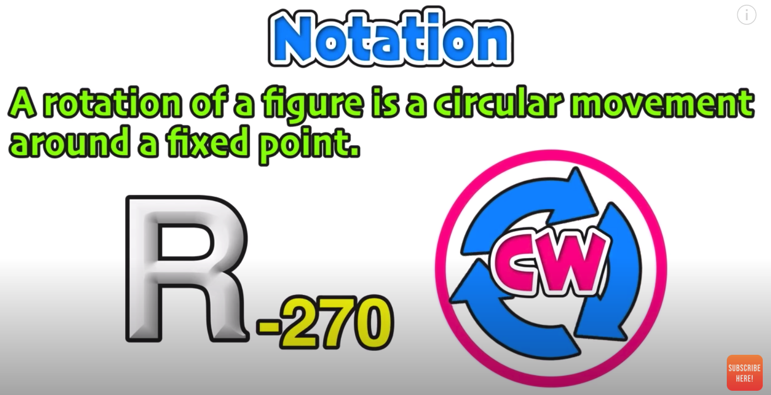

With point A then I canĬonstruct another right triangle and I could do it, I could do it several, I could do it several ways. The image of triangle SAM after rotation. What I'm essentially going to do, I'm going to do that for point M, I'm going to do that for point A, and I'm gonna do that for point S, and I'm gonna connect the three, the M prime, the A prime, and the S prime, and then that will give me the image, that'll give me the And so, the point M, its image after the 90 degree rotation would be right over here and I could call that,

So, after rotation, so what did I just do? I just took this, I just took this triangle that I just constructed, and I rotated it negative 90 degrees to get to this triangle right over here. And then your new triangle, the image of, I guess, what we just, this right triangle I've constructed if I rotate it by negative 90 degrees, 90 degrees in the clockwise direction, is going to look like this. In the clockwise direction well, then this is gonna go four in this direction just like that. So, if you were to rotate this, the entire triangle 90 degrees Let me make this clear, this side that I'm highlighting in green which we see are four units long. One, two, three, four, five, six, seven, it's gonna put us right over here.

One is one, two, three, four, five, six, seven units long, so it's still gonna be seven units long. It is going to end up, it is going to end up pointing up and how long is it going to be? Well, let's see, this To each of these sides? Well, this side right over here, if I rotate it by negative 90 degrees it is going to end up, Rotating this right triangle, this magenta one that I just constructed, by negative 90 degrees,īy negative 90 degrees, or 90 degrees in the clockwise direction. All right, so I have this right triangle. So, it's gonna go, it's gonna be, like, it's gonna look like that, and then it's gonna look like, whoops, that wasn't to press my, Of the right triangles is gonna be the line Trouble switching color, point M right over here, and I'm gonna construct a right triangle between point M and our center of rotation where the hypotenuse Gonna take each point, let's say point, using But how do we do that? Well, like we've done in previous videos what I'm gonna do is I'm So, let's just, instead of thinking of this in terms of rotating 270 degrees in the positive direction, in the counter-clockwise direction, let's think about, let's think about this, rotating this 90 degrees And 90 degree rotations are a little bit easier to think about. You see that that is equivalent, that is equivalent to a 90 degrees, to a 90 degrees clockwise rotation, or a negative 90 degree rotation. We're going in aĬounter-clockwise direction.

If you imagine a point right over here this would be 90 degrees, 180, and then that is 270 degrees. Negative 270 degree rotation, but if we're talking aboutĪ 270 degree rotation. In the previous video when we were rotating around the origin, if you rotate something by, last time we talked about a So, to help us think about that I've copied and pasted this on my scratch pad and we can draw through it and the first thing that we might wanna think about is if you rotate, I've talked about this So, this would be 270 degrees in the counter-clockwise direction. The direction of rotation by a positive angle is counter-clockwise. We have this little interactive graph tool where we can draw points or if we wanna put them in the trash we can put them there. Triangle SAM, S-A-M, and this is one over here, S-A-M, is rotated 270 degrees, about the point four comma negative two. But it's easy to calibrate it if you want to specify another point, around which you want to rotate - just make that point the new origin! Figure out the other points' coordinates with respect to your new origin, do the transformations, and then translate everything back to coordinates with respect to the old origin. Now, since (a, b) are coordinates with respect to the origin, this only works if we rotate around that point. Rotating (a, b) 360° would result in the same (a, b), of course. Because the axes of the Cartesian plane are themselves at right angles, the coordinates of the image points are easily predictable: with a bit of experimentation, you could easily 'prove' to yourself that rotating (a, b) 90° would result in (-b, a) rotation of 180° gives us (-a, -b) and one of 270° would bring us to (b, -a). Here's my idea about doing this in a bit more 'mathematical' way: every rotation I've seen until now (in the '.about arbitrary point' exercise) has been of a multiple of 90°.


 0 kommentar(er)
0 kommentar(er)
